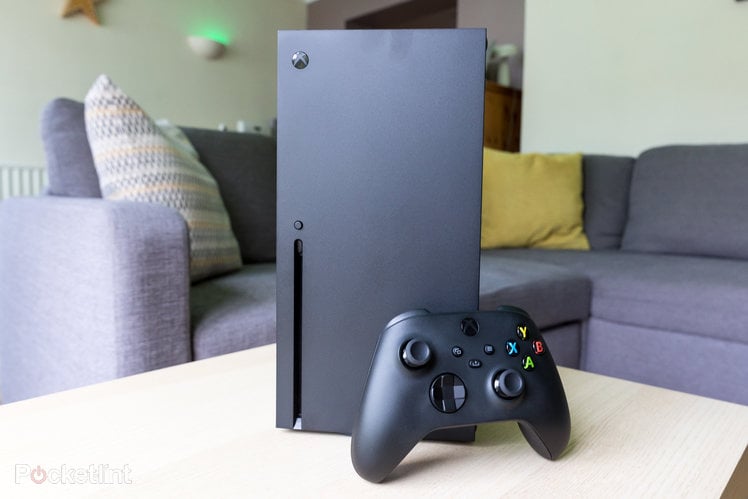
Unlike most other technologies that opt for iterant upgrades yearly, gaming is usually a relatively static genre. Console generations linger for six-to-seven years before being fully replaced, with maybe one or two minor hardware updates and software refinements in the meantime.
That’s why there’s generally a massive fuss whenever a new generation arrives. Not only does it invariably bring greater graphical fidelity and hardware advancements, it traditionally rips up the copy book and presses the reset button.
Not so this generation though. While the Xbox Series offers a true technological leap with the sort of specifications you’d normally find in a top-line gaming PC, it also has its feet firmly planted in the existing Xbox ecosystem and therefore starts with access to thousands of compatible games from the get-go – many of them optimised and improved simply thanks to the console’s inner wizardry.
But does that mean if you’re already an Xbox One owner that there’s a distinct lack of initial wow factor from the Xbox Series X? Maybe on day one, but as a future-looking console we suspect it’ll be wowing players for many years to come.
Design
- Dimensions: 151 x 151 x 301mm / Weight: 4.44kg
- Connections: HDMI 2.1, 3x USB 3.1, Ethernet, 802.11ac Wi-Fi
The Series X is a real break from tradition. If you’re an Xbox One owner then everything seems the same, superficially at least. The menu system, media abilities, even controller aren’t a million miles away from what you’re already used to using. You might even be concerned that you’ve made an expensive error in upgrading.
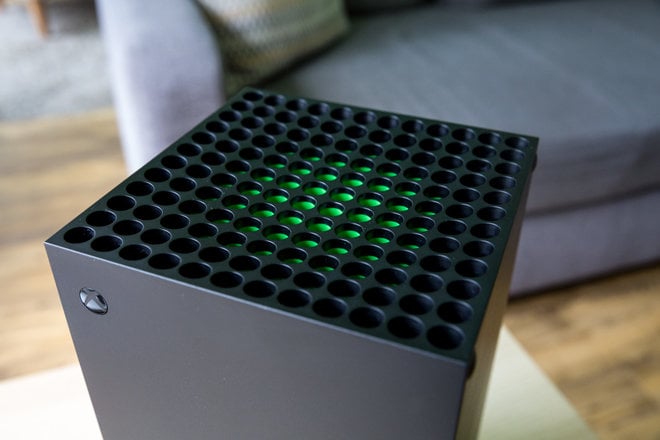
Thankfully though, you would be wrong. Delve deeper and check under the hood, and it’s a whole different kettle of fish. This is a powerhouse of a games console, with a user experience that is so familiar because it already works. Not only has Xbox adhered to the adage “don’t fix what isn’t broken”, it revels in it.
Sadly, that doesn’t extend to the design, which we’re not as convinced by. The Xbox Series X can be laid flat or, as seems to be the primary intention, stood upright like a mini tower PC. It is mostly non-descript and, in black, could fade into the background of a AV cabinet. But that also means it’s not really good-looking enough to stand proud as a monument to gaming (like the PlayStation 5, say, nor is it small enough to really stay out of the way.
The Series X is chunky, heavy, and our worry is that the all-important heat grille is on the top when vertical. Lay it on its side and we wonder, over time, whether that will present an issue – heat rises, after all. Essentially, make sure there is plenty of free space around it no matter the orientation.
On the front, you get a 4K Ultra HD Blu-ray disc drive slot, USB 3.1 port, plus controller connection, eject, and the trademark Xbox logo on/off buttons. The rear is reasonably empty of clutter, with another two USB 3.1 and HDMI 2.1 ports, with an Ethernet and a figure-of-eight power socket for good measure.
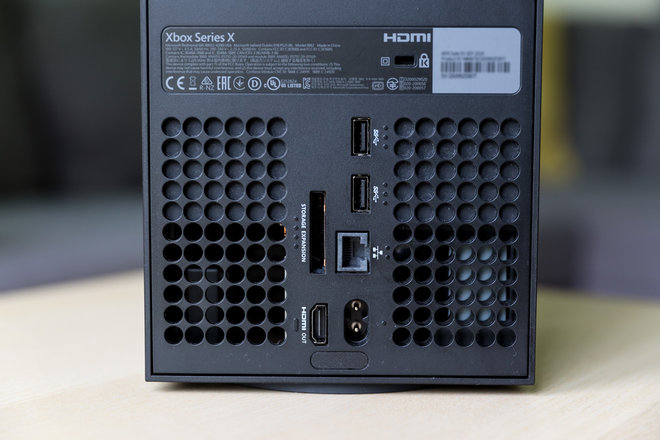
There is also a slot for the official SSD Expansion Card, which is currently only available in 1TB and made by Seagate. Two large grilles adorn the back too, which help with heat dissipation along with the concave grille on the top (or side, orientation dependent) of the console.
One nice design feature is that, by colouring the inner rings of some of the open holes on the roof, it creates a green circular pattern. But that’s about it for distinguishing features. The Series X really does put the box into Xbox.
New Xbox Wireless Controller
- New controller with share button
- AA batteries (included)
- Lower latency
- USB-C
Along with the console, plus power and HDMI cables, you get the new Xbox Wireless Controller in the box – in carbon black, like the Xbox itself. And you get two AA batteries to put in it.
Yep, Xbox has opted not to add a rechargeable battery as standard and continue down the route of choice. You can either add your own rechargeable cells, Xbox’s official charging solution, or a third-party alternative. And we don’t mind that.
While it’s not ideal for the environment to use up and throw away shop-bought AAs, adding our own rechargeable battery units means we can replace them when they start to fail and/or offer reduced playing time. By putting in a sited battery, that option is essentially closed off.
It is also indicative of the very idea of the new console series – that it is part of the same ecosystem as the last. Indeed, the new controller is compatible with Xbox One consoles too, while older versions are also compatible with the new console (and the Xbox Series S).
This cross-compatibility makes it a lot easier (and cheaper) for upgraders, who can simply re-register all their existing spare controllers, headsets and other accessories and continue to use them ad infinitum.
The only main changes between this controller and the last is the share button that you find dead centre. It enables much easier sharing for screenshots and the like. The D-Pad is also redesigned, but it’s more for ergonomic reasons than any tech benefit.
Inside, Bluetooth Low Latency (BTLE) and Dynamic Latency Input (DLI) support purportedly reduces lag, but we’ve never really had a problem in that area with the previous controllers anyway, so are yet to notice any difference.
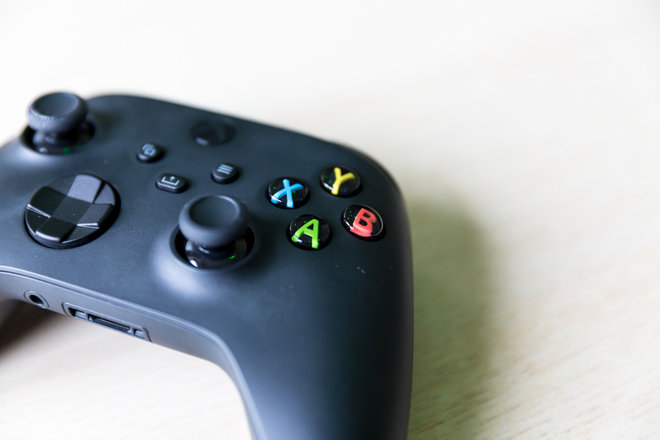
There is a USB-C connection on the top to wire the controller and reduce latency even further, if you are an eSports gamer, for instance. It can also be used to charge the official rechargeable battery pack, if you buy one separately.
Hardware
- CPU: Octa-core custom Zen 2 CPU
- Memory: 16GB of GDDR6 RAM
- GPU: 12 TFLOPS, 52 CUs
- Storage: 1TB SSD
- Storage Expansion
As we alluded to at the beginning of this review, the biggest and most impressive talents of the Xbox Series X lie within. Its specifications easily put it above any console that has gone before and, in fact, its next-gen peers.
You get a custom-build eight-core Zen 2 processor with each core running at up to 3.8GHz. There is also 16GB of GDDR6 RAM (10GB running at 560 GB/s, 6GB at 226 GB/s), and a graphics unit with 12 teraflops of processing power and 52 compute units.
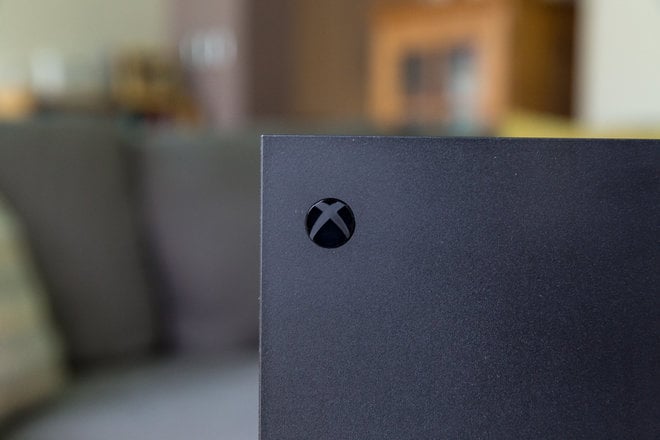
Cutting through the numbers, that allows for a console to render full, native 4K at 60 frames-per-second as standard, with the potential even of hitting 8K somewhere down the line (if developers fancy a dabble). It can also run games at a smooth and stable 120fps, with the initial batch likely to drop the resolution a tad to do so.
The earlier Xbox One X is capable of 4K gaming and, sometimes, 60fps – but not on this scale and not with such ease.
The processing is also just part of what Xbox calls its velocity architecture, which adds the speeds of the Series X’s custom 1TB solid-state drive (SSD) to provide developers with performance possibilities never before seen in a console. In short, it’s a monster with so much potential that we’ll unlikely see exactly what it can do for a good year or so.
Speaking of the SSD, while we were initially worried by the 1TB storage space, it seems okay for most usage scenarios. You can fit around 18-20 optimised games on it, without needing expanded storage. If you struggle, you can always add the official Seagate Storage Expansion Card, which is effectively the same standard SSD but plugged into the rear.
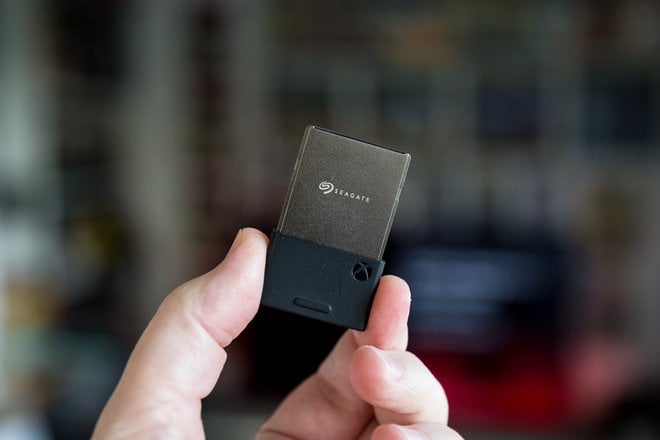
This is an expensive solution, however, so you might just want to add a USB 3.0 or 3.1 external hard drive instead, plugged into one of the three ports (you can add three HDDs if you choose). The only issue with this is that, even if you have a third-party external SSD, it won’t be able to match the speeds of the internal drive or official expansion – and it won’t be compatible with the optimised features for dedicated Xbox Series X/S versions of games.
It will work with Xbox’s new quick resume feature, which enables six or so games to pause in the background simultaneously ready to start instantly, but not actual game optimisation.
We suggest, therefore, that you store any Xbox One and other backward compatible games on an external drive, reserving the internal storage (or official Storage Expansion Card) for actual Xbox Series X/S games.
User experience
- Backward compatible with thousands of Xbox One, Xbox 360 and original Xbox games
- Dolby Vision and Dolby Atmos support for streaming media and games (when supported)
- No Dolby Vision for 4K Ultra HD Blu-rays at present though
- Setup through iOS and Android app
- 4K Ultra HD Blu-ray player
As we’ve already alluded to, the user experience of the Xbox Series X will be so familiar to existing Xbox One owners that it’s the least interesting feature. That’s because it is identical, bar the addition of dynamic backgrounds on the homepage and an overall sense of speed.
It’s extremely fast to use on the Xbox Series X – more so than on Series S even – and, to be fair, has only recently been upgraded and tweaked anyway. Think of it as having the latest Apple iOS or Google Android operating system launch on existing handsets before new iPhones and Pixel handsets are available.
Those with fresh eyes will note that the Xbox UI is busier than other consoles, with the tile approach placing a lot of scrollable menus on the screen at once. However, it’s very easy to navigate and we’d prefer to see more on the homescreen than have to search for hidden areas in menu systems.
Newcomers and Xbox One owners alike will applaud the new setup system, which works through the Xbox app for mobile devices. That way, you don’t have to use the clumsy on-screen keyboard with the controller and simply log in through your smartphone or tablet instead. In addition, if you are upgrading from an existing Xbox, you can bring all your settings with you.
Another great feature for upgraders is the ability to transfer your external hard drives and any games stored on them over to your Xbox Series X by just unplugging them from the old console and plugging them into the new. The games might need a small update, but then they work without any further downloading needed. And, those with Xbox Gold Live (or Xbox Game Pass Ultimate) will have cloud saves already stored online for their games library, which will instantly transfer as soon as you start any relevant title.
This is backward compatibility at its best. It might not have the wow factor of a brand-new console operating system, but that seamless interoperability is a godsend for those who have already accrued a decent games library and don’t want to start again. Disc-based Xbox One and compatible Xbox 360/original Xbox games will even just play in the Series X with minimum fuss.
In fact, such games might even play better. As well as increased frame-rates and resolution bumps in many instances – which are instant and without the need for a developer patch – a HDR (high dynamic range) effect is added to games that didn’t sport the picture tech previously. This is sort-of an upscaling technique that doesn’t add extra colour information as such but does artificially increase contrast. It generally looks great on the titles we’ve tested so far.
We haven’t yet been able to test the console’s other interesting tech addition – Dolby Vision for games – but will hopefully soon see titles that make use of the Xbox’s unique new feature. It most definitely works well for movies and TV shows, through streaming services like Netflix and Disney+, Dolby Atmos too.
It must be said, however, that Dolby Vision is not currently activated on the Xbox Series X for 4K Ultra HD Blu-rays that support it. There is speculation that it will be added at some point in 2021, when games also start to appear with the tech. But there are some benefits when it comes to spinning 4K Blu-ray discs.
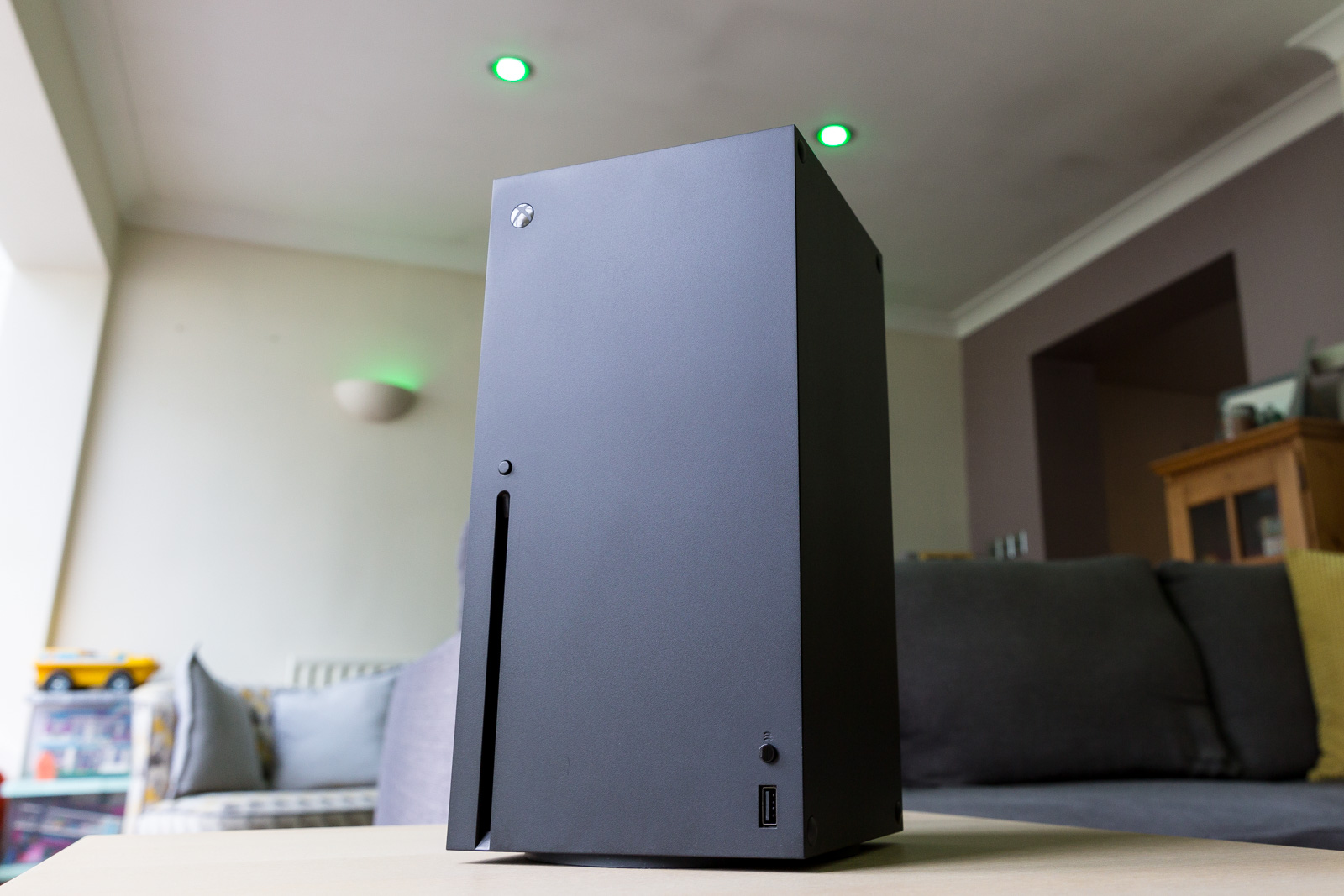
While both the Xbox One S and X are also capable of playing 4K Blu-rays, we’ve always had an issue with their loading times. This is significantly improved on the new console, and image quality is similarly impressive. One other thing to note though: the disc drive in the Xbox Series X is not compatible with 3D Blu-rays. That might not affect many but is a final nail in the coffin for the format in our house. You’ll soon see a stacks of copies of Tron: Legacy in charity shops, no doubt.
Performance
- Performance target: 2160p 60fps, up to 120fps possible; 8K support for future use; 4K HDR for video
- Auto low latency mode (ALLM)
- Variable refresh rate (VRR)
- DirectX ray-tracing
- AMD Freesync
Performance is both the most important element of the Xbox Series X – but also the hardest to fully judge right now.
On paper, the console should present games like never before (apart from on top-end a PC gaming rig). It has DirectX ray-tracing – which genuinely makes a massive difference to the way games look. It introduces a new, more natural lighting model that can flesh out games and render them more accurately than ever before.
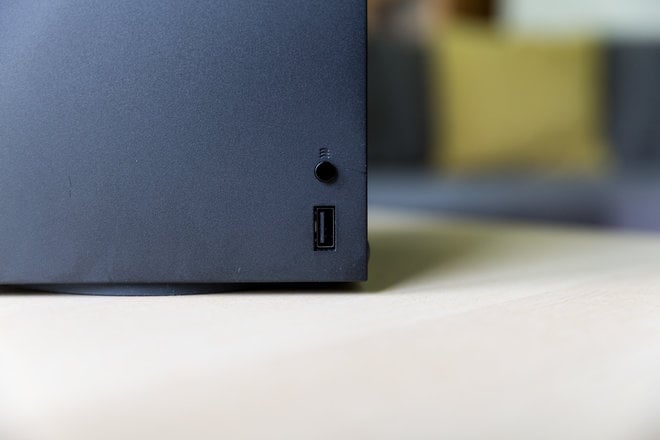
Then, of course, you have the resolution and frame rate. We understand that Xbox Series X games will consistently aim for a 2160p (4K) resolution running at 60 frames-per-second. Some games, such as driving sims and first-person shooters, can opt to increase the frame rate to 120fps, while dropping the resolution in some cases.
That could be essential for some gamers who prefer smooth, precise gaming over visuals, and will likely be a welcome trade-off. Supporting games will more often than not offer that as an option in their settings.
In all honesty though, we’ve been playing several of the “optimised” titles that will be available at launch and we love the best of both worlds you get with 4K and 60fps. The frame rate is still as smooth as butter, while the visual fidelity is extraordinary. Even on some of the Xbox One games, we’re getting crisper, smoother graphics than we’ve seen before.
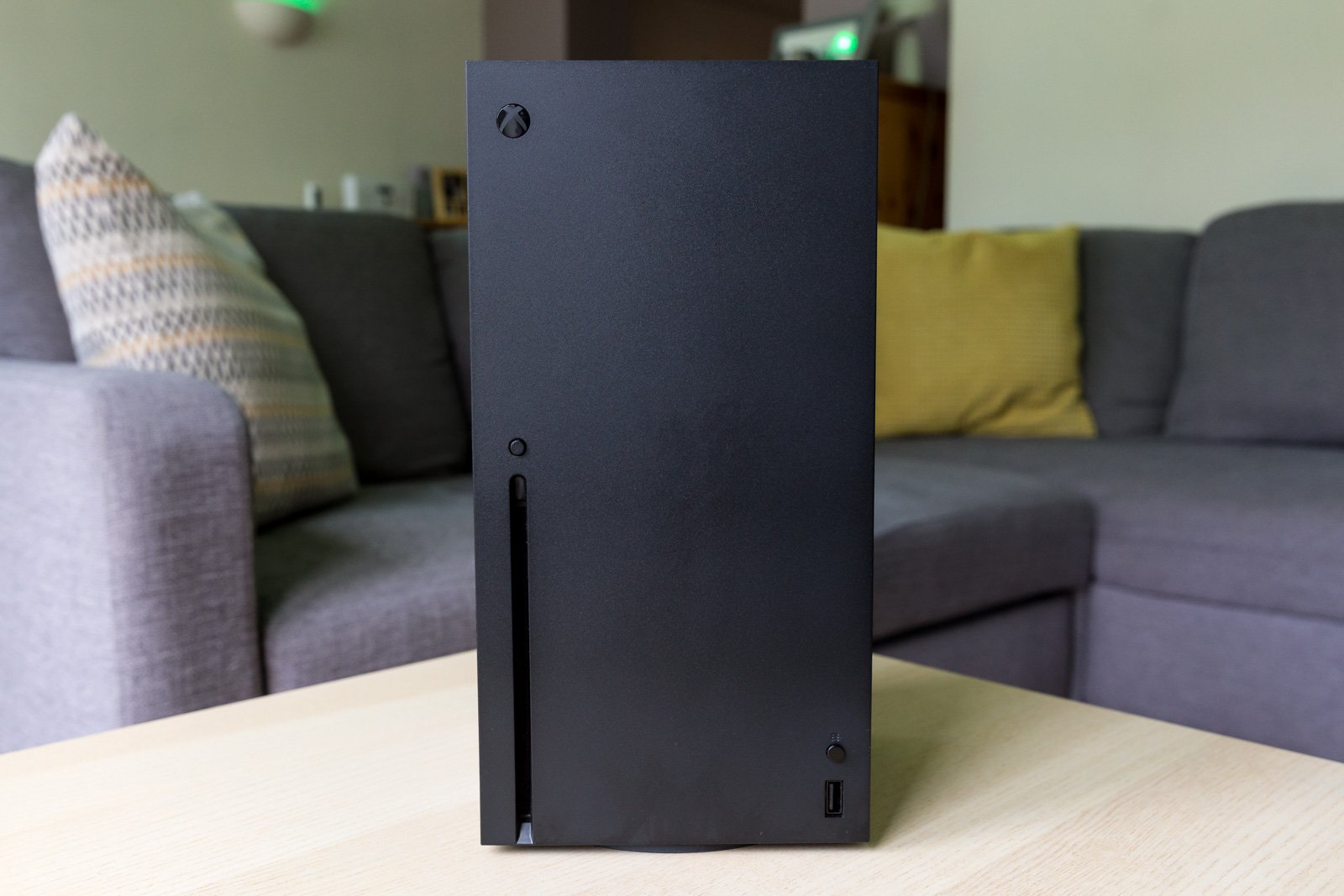
Indeed, we mistook one game for its optimised counterpart, the depth and detail was so much improved, even though we were actually just playing an Xbox One game through backward compatibility.
Games
- Some games optimised for Xbox Series X/S
- Xbox Game Pass supported
One area where the Xbox Series X suffers – at least at the time of writing – is in games. By that we mean native, optimised games either made especially for it or delivered as updates on existing games through smart delivery.
With Halo Infinite sadly delayed until 2021, the console is launching with few standout exclusives – relying on upgraded back catalogue titles and third-party releases. That means you will have to wait a while to see what the machine is really capable of doing.

On the other hand, however, you have Xbox Game Pass (which is best subscribed to through Ultimate) and the 200 plus games it has to offer. That is so compelling for a new console launch. Several of those games will also be enhanced on Series X, so while there might not be any triple-A draws to make you choose Xbox over rivals, you get a massive library of games from the get-go. That should certainly tide you over until the big guns come a blazin’.
One thing’s for certain, it’s got the firepower when they do.
